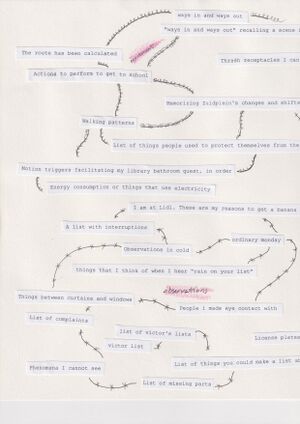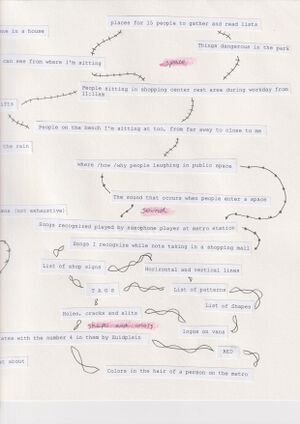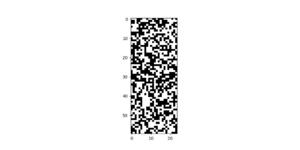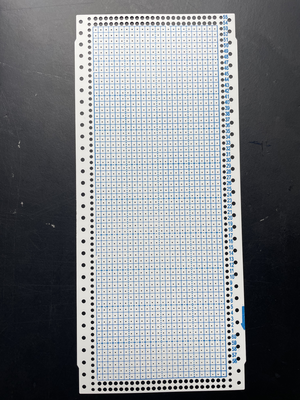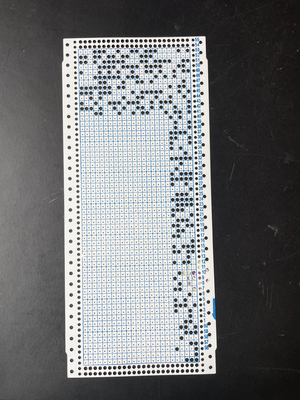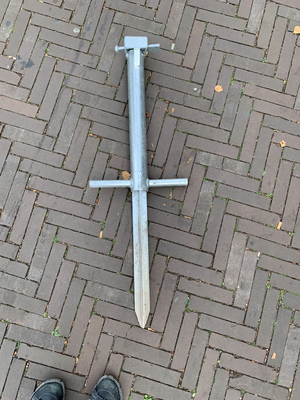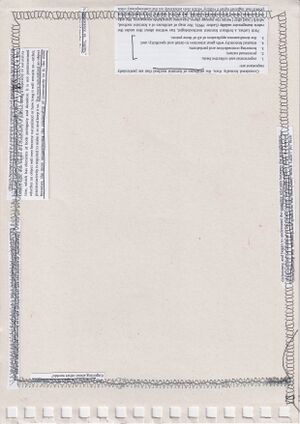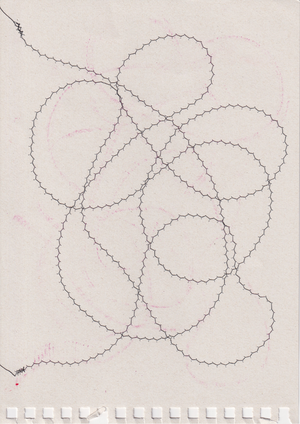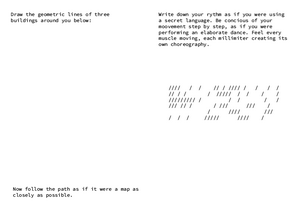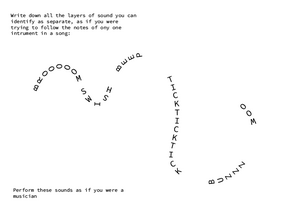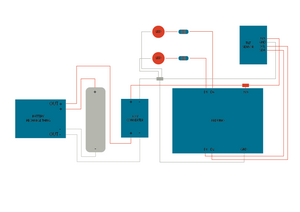User:Anita!/Special Issue 24 notes: Difference between revisions
No edit summary Tag: Manual revert |
No edit summary |
||
| (16 intermediate revisions by the same user not shown) | |||
| Line 19: | Line 19: | ||
|} | |} | ||
==Knitting city noise== | |||
==[https://pzwiki.wdka.nl/mediadesign/User:Anita!/Special_Issue_24_notes/knitting_sound| Knitting city noise]== | |||
{{:User:Anita!/Special Issue 24 notes/knitting sound| Knitting city noise}} | {{:User:Anita!/Special Issue 24 notes/knitting sound| Knitting city noise}} | ||
| Line 34: | Line 35: | ||
I want to experiment with this as a different method of storytelling with this, maybe sharing remarks about places in the city, maybe making up fictional stories about them. Navigation as a method for story listening. | I want to experiment with this as a different method of storytelling with this, maybe sharing remarks about places in the city, maybe making up fictional stories about them. Navigation as a method for story listening. | ||
== | ==[[User:Anita!/Special Issue 24 notes/sound map|Sewn soundscape]]== | ||
{{:User:Anita!/Special Issue 24 notes/sound map}} | |||
==Out of place== | |||
Archive of items, part of the citys infrastructure, out of place. | |||
In the task of creating a perfect city, some objects are left behind. | |||
{|style="margin: 0 auto;" | |||
|[[File:Sign.png|thumb|A street sign without its sign, pulled out of its 'natural' environment]] | |||
|[[File:The street itself.png|thumb|alt=The street itself, pulled out of the ground|The street itself, pulled out of the ground]] | |||
|} | |||
==Reader!!== | |||
For now, a list of the texts that are in the process of being read: | |||
* Uncreative Writing - Kenneth Goldsmith | |||
* AmbientSense: A Real-Time Ambient Sound Recognition System for Smartphone - Mirco Rossi, Sebastian Feese, Oliver Amft, Nils Braune, Sandreo Martis, Gerhard Tröster | |||
* [https://wiki.hackersanddesigners.nl/index.php?title=A_brief_and_incomplete_history_of_Eliza_Ludd,_1812%E2%80%94_by_Ollie_George A brief and incomplete history of Eliza Ludd, 1812— by Ollie George] | |||
* Encoding/Decoding - Stuart Hall | |||
* The rest is noise - Alex Ross | |||
* The future Looms - Sadie Plant | |||
* Zeros and Ones - Sadie Plant | |||
'''For the format:''' going back to last semesters idea of making an annotation, text and image collage. Word collages copying and pasting pieces of text mixed with annotations and images taken by me around the city directly relating to the topics being researched. So overall a mixture of original and uncreative writing. | |||
{|style="margin: 0 auto;" | |||
|[[File:Sewing on paper.jpg|thumb|Experiment with sewing annotations and parts of text]] | |||
|[[File:Sewing on paper1.png|thumb|Testing using my sewing machine on thick paper]] | |||
|} | |||
{|style="margin: 0 auto;" | |||
|[[File:Sewing 1.png|thumb|Sewing words 1]] | |||
|[[File:Sewing 2.png|thumb|Sewing words 2]] | |||
|} | |||
==Proposal for SI project== | |||
===What is it?=== | |||
A workshop consisting of people performing and following scripts and walking rituals we would prepare before. The partecipants would be asked to write their own scripts, share their personal rituals to look at the city theugh a different lens. This shared information, together with the scripts would then be printed into one publication shared at the special issue launch, with more blank pages as an invitation to continue the wrtiting and exploring. | |||
The scripts written by us would focus on showcasing aspects of the city that are 'scripted' to be ignored by the design of the urban environment, shifting the lends with which you are supposed to look around. For example, | |||
- draw the edges of several buildings close to you | |||
- now use it as a map, see where it bring you | |||
Un-scripting the city with scripts. Noticing what urbanism tries to hide in its design, while being critical of it. Writing and contributing to this publication yourself to create your own little critical walking scripts. | |||
The publication will overall include: | |||
- scripts to un-script the city | |||
- hand drawn maps | |||
- sewn maps | |||
- visual interpretations of experiments me and mania would do while writing the scripts and maps | |||
- workshop documentation | |||
- blank pages for further contribution from who wants the publication | |||
===Why make it?=== | |||
For the people performing these rituals to be brave and curious, be consious of the unwritten structures that are designed into the 'city behaviour' and try to break them. At the Gemente visit, we were told that 98% of our behaviour is without having to think about it, but i do not belive that is true, our behaviour in this environment is really dictated by the rules and restrictions that are in place. Re-claim a city that does not feel yours with these little breaks of paths. | |||
===Workflow=== | |||
Create a network of hand drawn, sewn and imaginative maps of the territory to include in the publication. Test them with a workshop that we will document and include in the final draft of this publication. | |||
===Timetable=== | |||
Draw and produce between today and 19th of June. | |||
Print the rituals for the workshop on the 20 or 21 | |||
Workshop on the 22nd | |||
Edit and add the documentation into the publication before the 24th | |||
Print and bind! on 25th hopefully | |||
===Rapid prototypes === | |||
{|style="margin: 0 auto;" | |||
|[[File:Possible script 1.png|thumb|possible script 1]] | |||
|[[File:Possible spread.png|thumb|possible script 2]] | |||
|} | |||
===Previous practice=== | |||
Hand drawn maps, sewn maps, writing lists, performing rituals. Working with paper and print. | |||
===Relation to a wider context=== | |||
In a highly scripted city, where paths are written for efficency and so many different sets of rules and prohibitions exist, this project would be a playful and critical way to 'read' the urban environment, encouraging chance discovery and unproductive inefficency. | |||
==Device to read the city== | |||
Project with Mania | |||
{{:A device to read the city| A device to read the city}} | |||
Latest revision as of 18:13, 5 June 2024
Making lists
Making lists as an observation method, spent the morning in the south. I was already familiar with this method, i like making lists and make them quite frequently. I made many lists, but the ones that stood out to me were:
- people i made eye contact with
- license plates with the number 4 in them by Zuidplein
- colors in the hair of a person on the metro
- things that I think of when I hear rain on my list
in the afternoon we gathered all the list titles in a pad, later in the evening i tried to draw a map connecting the lists:
Knitting city noise
Knitting city noise is a part of the Project that may or may not be made
I want to connect a digital knitting machine (that has a small computer inside of it) to a sound sensor. This sensor will react to the sounds around it (city noise) and switch the colour of the yarn that is being used, creating a distinct fabric for each event that is being listened to.
This could be done by placing the sensors in different locations, listening to the sounds of the city and looking at the codes and machines interpretation visually translated into a fabric. Using the fabrics to imagine what city experience they refer to, heavy traffic, the sound of a tram passing by, a metro announcement, wind between tall buildings, loitering, construction etc.
The ideal outcome for this would be showing the fabrics in an installation setting, showing the fabrics possibly in connection to the sounds they come from.
Why make it?
Making a visual output to city noise. Looking at noise, mixing two senses and trying to capture the sonority of being in a busy city, and how the machine perceives it through a visual output.
Also on a more personal objective perspective, practising using arduino and sensors, connecting my interest for garment making techniques and fabrics with technology
Workflow
Identifying and choosing city noise. Researching and learning about how digital knitting machines work, more specifically, looking at the brother electroknit kh-940 since it is the one available to me in the fashion station. Based on my findings, programming the code for the sensor to listen and then change the colour of yarn when it hears noise. Testing the results on the machine, making adjustments on the sensitivity of the sensor. Knitting several different fabrics based on different city noise and observing the differences between them.
Timetable
Two maybe three weeks? I feel like once the code works it should not take long to put together. It is not that ambitious of a project I think.
Rapid prototypes
Connecting the sound sensor (from prototyping class):
#define VCC 5.0 #define GND 0.0 #define ADC 1023.0
const int sensorPin = 34; float voltage;
void setup() {
Serial.begin(115200);
}
void loop() {
voltage = GND + VCC*analogRead(sensorPin)/ADC;
Serial.println(voltage);
}
Recording quickly made on my phone on Blaak:
Sound of an ambulance passing by
Intersection noise
Tram coming, stopping and leaving
A visual (hand drawn) interpretation:
Previous practice
My practice often references and includes elements from fashion and fabric manufacturing techniques.
Relation to a wider context
Does machine find the city overwhelming? or does it find it soothing? how can this be interpreted by simply looking at fabric?
Further prototyping
After looking into it a bit more, the 'computer' in the knitting machine is not really a computer, so I started working with the punch card machine instead, trying to write a script that will let me know, based on the nominal data received from the sensor (yes noise, no noise) which squares will be knitted in a particular colour by the machine.
Trial python script not connected to the sensor:
import matplotlib.pyplot as plt import numpy as np
rows, cols = 60, 24 data = np.random.choice(['yes', 'no'], size=(rows, cols))
binary_data = np.where(data == 'yes', 1, 0)
plt.figure(figsize=(10, 5)) plt.imshow(binary_data, cmap='gray', interpolation='none') plt.show()
Python script to transform the inputs received from the sensor into a black and white grid:
import serial import matplotlib.pyplot as plt import numpy as np import time
ser = serial.Serial('/dev/cu.usbserial-1130', 115200, timeout=1)
data = []
rows, cols = 60, 24
def read_from_arduino():
while len(data) < rows * cols:
line = ser.readline().decode('utf-8').strip()
if line:
data.append(line)
print(f"Received: {line}")
ser.close()
return data
data = read_from_arduino()
matrix = np.array(data).reshape(rows, cols) binary_matrix = np.where(matrix == 'yes', 1, 0)
plt.figure(figsize=(10, 5)) plt.imshow(binary_matrix, cmap='gray', interpolation='none') plt.show()
This is all based on a punch card i got at the fabric station.
This is the arduino code for the listening sensor:
#define VCC 5.0 #define GND 0.0 #define ADC 1023.0 const int sensorPin = 33; float voltage;
void setup() {
Serial.begin(115200);
}
void loop() {
voltage = GND + VCC*analogRead(sensorPin)/ADC;
if (voltage > 160){
Serial.println("yes");
}
else {
Serial.println ("no");
}
delay(100);
}
Also took a look at OpenSCAD, a software to 3D model with code, using a code from here to model a punch card and its pattern. I think maybe though it is easier to use the python script directly because I don't understand the code that much.
LORA network
(abandoned for now, might come back to it but right now i am more interested in exploring sound in relation to the city)
Creating a LORA network to share non linear narratives. Imagine having nodes in high points of the city, to share narrative information. Each node contains a secret, or a piece of information part of bigger story. I want to make a city wide treasure hunt, inviting the user to explore the city. A message would only be retrieved when the person is in proximity of one of the nodes, hiding information inside of the infrastructure that could overall be used for different purposes as well. It could be interesting to somehow implement sensors as well inside of this.
I am extremely new to this so honestly, I have no idea if this is even possible to do.
I want to experiment with this as a different method of storytelling with this, maybe sharing remarks about places in the city, maybe making up fictional stories about them. Navigation as a method for story listening.
Sewn soundscape
Context
To me, sound is a very integral part of what makes a city a city. notice how loud a common place is. In a space or place that is public, communal, shared is so often loud. filled with people talking, announcements, music, sounds.
what is the importance of silence? and is absolute silence something i would like to look for? would silence make you uncomfortable? what does silence sound like?
i ask myself the importance of white / background noise. i travel on public transport and record and try to separate and pay attention to all the overwhelming auditory signals i receive. i hear the movement of the tram as a machine, starting and stopping or better being ok stand by. i hear the announcements the mechanical and cold voice makes, telling passengers where we are and where we are going. i hear the music bleeding from other peoples headphones. i hear conversations between colleagues and friends. i hear the sound of checking in and out. i hear the rain puttering. i hear someone zipping up their jacket, getting ready to leave. a sneeze. sighing. breathing. getting up. walking.
Follow sound and rhythm. List sound and rhythm.
For this special issue, i feel very inspired to work with sound in relation to the city. In prototyping we made a 'sound map' of sorts, recording the sounds of places, trying to guide people in a certain way without using words, focusing on the sounds that make a place recognizable: children playing, a wind chime, the ticking at a traffic light. Would it be possible to create a map exclusively relying on sound?
I decided to start working by using a recorder while walking around, gathering a collection of noisy walks. Listening back on what happends, writing it down and looking at the connections between the sounds. I am on a hunt for silence in the city, but have not yet been able to find it. Maybe the night is quieter, but there is always a swish of the wind, a car or bicycle passing by me, a bird flying into the canals water. Of course, residential neighborhoods, even in the city.
The outcome of these walks will be an abstract map sewn on canvas, with each stitch type representing a different sound. A sewn soundscape.
Why make it?
Making a visual sewn output to a sound map, marking the sound of routes and paths in the city of Rotterdam. Exploring graphic notation, exploring sound and relating them to practices I am already familiar with (sewing).
Workflow
Recording bikes, walks, travels around the city of Rotterdam. Translating those sounds by possibly using a script, maybe instead use Fast Fourier transform algorithm that Joseph told me about, but I'm not sure yet. With that data, assign a stitch to a sound and start mapping, first on paper (as it is less time consuming) and then on fabric.
Previous practice
My practice often references and includes elements from fashion and fabric manufacturing techniques. Very much related to my other Project That May.
Relation to a wider context
Mapping following a different sense than what we normally use as navigation (sound over sight). Interpretation of graphic scores, instead of using them to play music, using them for as a form of orientation.
Collecting data
I have started to record walks and bikes around the city in order to collect a good amount of data to create this map. I am struggling a bit to find a way to translate this sound data into a visual score that i can then sew on the tapestry. I attempted turning it into a soundgraph, but it is not really what I am looking for, so I think I will just do this 'manually' with my ears.
Another thought is to maybe, instead of using the scores, to use words instead, printing them on thick paper and then sewing them into a map, kind of what I was working on for my reader.
conversation child voice adult voice bike scooter motorcycle car tram tick tick tick traffic light seagull nondescript bird wind honk breaks my steps my bike undescript noise ambulance police construction bark
I will now screen print these onto fabric, cut them out and spread them in place to be sewn.
Out of place
Archive of items, part of the citys infrastructure, out of place. In the task of creating a perfect city, some objects are left behind.
Reader!!
For now, a list of the texts that are in the process of being read:
- Uncreative Writing - Kenneth Goldsmith
- AmbientSense: A Real-Time Ambient Sound Recognition System for Smartphone - Mirco Rossi, Sebastian Feese, Oliver Amft, Nils Braune, Sandreo Martis, Gerhard Tröster
- Encoding/Decoding - Stuart Hall
- The rest is noise - Alex Ross
- The future Looms - Sadie Plant
- Zeros and Ones - Sadie Plant
For the format: going back to last semesters idea of making an annotation, text and image collage. Word collages copying and pasting pieces of text mixed with annotations and images taken by me around the city directly relating to the topics being researched. So overall a mixture of original and uncreative writing.
Proposal for SI project
What is it?
A workshop consisting of people performing and following scripts and walking rituals we would prepare before. The partecipants would be asked to write their own scripts, share their personal rituals to look at the city theugh a different lens. This shared information, together with the scripts would then be printed into one publication shared at the special issue launch, with more blank pages as an invitation to continue the wrtiting and exploring.
The scripts written by us would focus on showcasing aspects of the city that are 'scripted' to be ignored by the design of the urban environment, shifting the lends with which you are supposed to look around. For example,
- draw the edges of several buildings close to you
- now use it as a map, see where it bring you
Un-scripting the city with scripts. Noticing what urbanism tries to hide in its design, while being critical of it. Writing and contributing to this publication yourself to create your own little critical walking scripts.
The publication will overall include:
- scripts to un-script the city - hand drawn maps - sewn maps - visual interpretations of experiments me and mania would do while writing the scripts and maps - workshop documentation - blank pages for further contribution from who wants the publication
Why make it?
For the people performing these rituals to be brave and curious, be consious of the unwritten structures that are designed into the 'city behaviour' and try to break them. At the Gemente visit, we were told that 98% of our behaviour is without having to think about it, but i do not belive that is true, our behaviour in this environment is really dictated by the rules and restrictions that are in place. Re-claim a city that does not feel yours with these little breaks of paths.
Workflow
Create a network of hand drawn, sewn and imaginative maps of the territory to include in the publication. Test them with a workshop that we will document and include in the final draft of this publication.
Timetable
Draw and produce between today and 19th of June. Print the rituals for the workshop on the 20 or 21 Workshop on the 22nd Edit and add the documentation into the publication before the 24th Print and bind! on 25th hopefully
Rapid prototypes
Previous practice
Hand drawn maps, sewn maps, writing lists, performing rituals. Working with paper and print.
Relation to a wider context
In a highly scripted city, where paths are written for efficency and so many different sets of rules and prohibitions exist, this project would be a playful and critical way to 'read' the urban environment, encouraging chance discovery and unproductive inefficency.
Device to read the city
Project with Mania
By reading we mean finding another possible form of seeing, moving, listening
The project imagines an urban environment that can be read, analyzed and criticized as a text. By reading the city in this way we find other possible ways of seeing, moving and listening. In a scripted city, marked by escalating levels of perfection, efficiency and control, the emancipatory aspects of urban life are undermined, allowing little room for anything that doesn't fit the image of the "norm".
Scripts to Read the City is an attempt to foster diverse experiences and uses of space, similar to a theater script interpreted differently by each actor. The tools of navigation are a device indicating which character to play and a guide, including a set of directions and instructions.
The project explores a relation between scripts and spontaneity, chance and control, and how scripts and unpredictability can enhance each other, stimulating imagination, encouraging us to engage with space from another perspective.
Link to our working pad
About
Context
The project starts from a concept that an urban environment can be read, analyzed and criticized as a text. By aimlessly wandering and drifting we can name exactly what we see, hear. List making can make very explicit what is missing, and who is not present or what is successfully hidden. If the city can be read it can also be annotated Posters, newspapers, graffitti, clothing, performances in public squares, protest, traffic serve as footnotes, annotations with very diverse comments.
Many services and "smart solutions" provide comfort but also drastically reduce the level of unpredictability in a city. In a highly scripted cities, filled with prohibitions, navigations, how can we use scripts to enforce and strenghten unpredictability?
What is it?
A physical device and a publication closely connected, working together. (Used as a method to encourage chance discovery and unproductive inefficiency, activated by a workshop)
a device
- device can be used to observe and to listen to
- has a shape of a tube that can be carried with you and accompany your walk
- assignes a character to follow, based on the built in tilt sensor that measure steps
a printed guide
- includes a manual for the device
- collect scripts
- template to make your own paper device
- template to write your own script
workshop
- project presentation
- make your own device
- a walk to perform scripts
- scripts writing
- feedback
Why make it?
In a smart city ruled by obsession with perfection, maintenance and efficiency, how do we measure to whom those spaces are serving? And who decide what is the norm? This project is an attempt to find new forms of observing the city, to understand who is present in a particular space and what are their real needs and desires? What kind of city do we actually want? For the people performing this to be brave and curious, be concious of the unwritten structures that are designed into the 'city behaviour' and try to break them. At the Gemente visit, we were told that 98% of our behaviour is without having to think about it, but we do not belive that is true, our behaviour in this environment is really dictated by the rules and restrictions that are in place. Re-claim a city that does not feel yours with these little breaks of paths.
Allows continuously overwriting many parts of one street ( seeing a familiar place within a very different context)Different narrative, objects, words, sounds, observations revealed
Plan
Week 1:
concept
writing scripts
Prototype 1
Design of the device - come up with ideas, sketches, materials, all rthe inspiring visual references
Power the device
Week 2
Editing of the scripts
A guide - templateFinalize the device
Plan a workshop
Send invites for a workshop
Week 3
Print the guide (Wednesday)
Workshop (Saturday)
Adjust the guide if time allows with insights from the workshop
Week 4
Playing cards
Drinking wine
Celebrating the project
Finalizing documentation from the workshooooop
Scripted city
Smooth city is expierienced differently by different people, and as much as everyone needs a safe and clean urban environment, free from danger and crime, it can also be a highly normative, controlling environment, gradually eliminating any chance for unexpected changes, productive friction, or oppurtunities to intervene according to one’s own ideas and desires.
Steering away from the expectations set by the "smooth city" often leads to various forms of social discomfort, ranging from disapproving looks to police intervention. Consequently, anything that strays from these expectations is seldom allowed to evolve naturally or at its own pace, resulting in a homogenized environment where diversity and individuality are suppressed.
Scripts for perfection and efficiency
- Contemporary urban scenarios - predictable what can happen
- Dictating what kind of activities are allowed
- Controlled terrain
- Social norms
- Certain expectations
- How people are expected to behave?
What kind of city do we accually want?
- Never speak to strangers / talk to strangers
- Desire for smoothness / desire for friction
- Frictionless environment / Random chances encounter
- Predictable / Surprising
- Higly controlled spaces / Autonomous spaces
- Privatised / Collectively shaped
Script open for interpretations" In the ‘Smooth City’, complexities are deliberately erased. Spaces and narratives are simplified to form a streamlined version of urban life. The city, with its highly scripted and predictable spaces, becomes easy to use and thus remains unquestioned. The opposite of smoothness, unsmoothness, does not necessarily equate to unscriptedness. Like a theatre script that results in a different play according to a different director and actors, the ‘Unsmooth City’ enables a variety of narratives and interpretations. As such, smoothness and unsmoothness can coexist and even enhance each other." René Boer
scripts
page 1
N: Walk along one street.
O: Read the words that you can find written around you.
Write a poem with the sounds they make.
L: Listen for the layers of sound. Notice the background hum, the mid-level sounds, the prominent noises and walk along them.
Now perform the sounds as if you were a musician, using the device as your instrument.
page 2
N: Whenever you see a narrow alley or a side street, take it.
O: Focus on the textures you encounter—brick walls, building's façade, the color of a passerby's coat, wooden benches, metal railings. Touch and describe them
L: Listen to the rhythm the sounds around you are creating. Try to ignore the tones, and only focus on the pattern the sounds are making.
Some are fast,
slow,
repetitive.
How many different kinds of rhythms can you collect?
page 3
N: Walk to the quietest place you can think of in your close surroundings
O: Search for written and unwritten scripts. How are you expected to behave even in this tucked away place? Are they prohibitions or encouragements?
L: Now listen to the loudest sound
page 4
N: Walk to the nearest intersection and cross to the opposite corner
O: Spend some time looking up at the tops of buildings Then carefully examine the ground Look for objects that could easily stay unnoticed Spend a moment scanning the building from top to the bottom - observing without moving.
L: Identify as many sounds as you can. What do they tell you about this place?
page 5
N: Take a left at the intersection and follow the road
O: Imagine you were able to archive exactly how your eyes are moving
L: Close your eyes and listen to the city’s sounds for a moment They may appear as one big thing at first, but as you pay more attention, you notice how each is so separate.
Imagine now that they are different instruments in a song, and try to find all of them.
page 6
N: Cross the street and walk diagonally until you reach a grassy area
O: Look at how the buildings and objects around you touch. Are they kind to each other? Are their bonds strong? How long do you imagine they could have they been there for together?
L: Walk along the perimeter of the grassy area, stop at various points and listen how different the reoccuouring sounds are in each of these spots. Read them and compare how they sound from place to place.
page 7
N: Pick one moving sound you think you can follow and see where it brings you
O: Stand still, in front of a city object of choice.
Examine it closely.
Notice how it looks, feels and sounds.
How it exists in space.
Now imagine being this object, looking at the world from the same stationary position.
Pretend you share the same set of eyes and go for a little adventure.
L: Read for sounds like the one you followed. Are they frequent? Loud? What do they tell you about this place? And how are they connected to it?
page 8
N: Take exactly 37 steps to the left. Be conscious of your movement step-by-step, as if you were performing an elaborate dance. Feel every muscle moving, each millimeter creating its own choreography
O: Notice how moving in a different way makes you look at things. Can you focus on looking if you move in a way that feels unnatural to you?
L: Focus on the sounds your careful movements produce, do your steps rumble?
page 9
N: Look at the people in the environment around you. Pick one and copy how they move. Their step, how they move their hands, maybe even their tone of voice if you can hear them talking.
O: Can you see a surveillance camera ?
L:How much noise are you making right now?
How loud is your step?
Are you listening to music on headphones? Are they bleeding any sound?
Are you breathing loudly enough to be heard?
page 10
N: Walk until you find a bench. Sit down and go to the page number...
O: Observe the people around you
Notice their body language, expressions, and interactions. What stories do you imagine for them? Imagine who they are, and what they notice in the city. Look for this.
L: Read around and search if someone else is repeating them. Are they the same?
Prototyping the device
We work on the (sensor) hardware while also thinking about the look of the device.
Technical aspects for the technical aspects we need:
- Tilt sensor
- Wires
- Microcontroller with SD card
- 3 leds
- battery
- maybe resistors
Led one turns on after one step. This led is corresponding to the observer section of scripts in the publication/guide. This will prompt the curious pedestrian playing to go to that section and perform a chosen script.
Led two turns on after 200 [could be changed, temporary value for testing] steps. This corresponds to the listener section of the publication/guide. This will prompt the curious pedestrian playing to go to that section and perform a chosen script.
Led three turns on after 500 [could be changed, temporary value for testing] steps. This corresponds to the listener section of the publication/guide. This will prompt the curious pedestrian playing to go to that section and perform a chosen script.
It would be nice if after this, the succession would continue in a loop, to have the pedestrians be able to keep playing after, choosing to perform new scripts.
For now (7 June), the code looks like this:
#define outputA 14 #define outputB 12 #define outputC 13 #define outputD 15 #define outputE 2
int counter = 0;
int aState;
int aLastState;
void setup() {
pinMode (outputA,INPUT); //this is giroscope
pinMode (outputB,INPUT);
pinMode (outputC, OUTPUT); //this is led so signal goes out
pinMode (outputD, OUTPUT); //this is led so signal goes out
pinMode (outputE, OUTPUT); //this is led so signal goes out
digitalWrite (outputC, LOW); //turns all led off at beginning digitalWrite (outputD, LOW); //turns all led off at beginning digitalWrite (outputE, LOW); //turns all led off at beginning
Serial.begin(9600);
Serial.println("Hello World.");
delay(2000);
aLastState = digitalRead(outputA); //checking the connection
Serial.println(aLastState);
}
void loop() {
aState = digitalRead(outputA); //0 on groun 1 on 5 v, also checking connection
if (aState != aLastState){
// If the outputB state is different to the outputA state, that means the encoder is rotating clockwise
if (digitalRead(outputB) != aState) {
counter ++;
} else {
counter --;
}
Serial.print("Position: ");
Serial.println(counter); //write the number of turns
if(counter >= 50){
digitalWrite(outputC, HIGH);
} //turn on led if it has turned more than 50 times
else {
digitalWrite (outputC, LOW);
}
if(counter >= 100){
digitalWrite(outputD, HIGH);
}
else {
digitalWrite (outputD, LOW);
} //turn on led if it has turned more than 100 times
if(counter >= 150){
digitalWrite(outputE, HIGH);
}
else {
digitalWrite (outputE, LOW);
} //turn on led if it has turned more than 150 times } aLastState = aState; // Updates the previous state of the outputA with the current state }
Reference used: https://howtomechatronics.com/tutorials/arduino/rotary-encoder-works-use-arduino/
Like this, the three LED turn on after 50 turns of gyroscope each, but we want them to turn off also, so it still has to be modified.
Real Final Code:
#include <BMI160Gen.h> #define listener 12 #define observer 14
const int select_pin = 10; const int i2c_addr = 0x69;
int aState; int aLastState;
void setup() {
Serial.begin(115200);
while (!Serial);
BMI160.begin(BMI160GenClass::I2C_MODE, i2c_addr); BMI160.setStepCountEnabled(1); BMI160.setStepDetectionMode(0);
pinMode (listener, OUTPUT); pinMode (observer, OUTPUT); digitalWrite(listener, HIGH); delay (1000); digitalWrite(listener, LOW);
}
void loop() {
int steps = BMI160.getStepCount();
if (steps > 100){
BMI160.resetStepCount();
}
Serial.println(steps);
aState = digitalRead(steps);
Serial.println(steps);
if(steps > 0 && steps < 50){
digitalWrite (listener, HIGH);
}
else {
digitalWrite (listener, LOW);
}
if(steps > 50 && steps < 100){
digitalWrite (observer, HIGH);
}
else {
digitalWrite (observer, LOW);
} }
Prototyping physical
Placeholder for slideshow of scanned publication:))
Workshop
- intro - 10 / 15 minutes, context of this project, present the publication - guide and the device
- play with the device - 15 min (give printed guide with do it yourself paper device)
- walk - 30 minutes
- meet again and invite them to write scripts - 10 min
- share / or exchange if they want (bring scanner so we can document)
- get feedback
- you can take the your own script and the guide with you
- hugs <3 byeeee
POSTER!!!!
DOCUMENTATION: https://pzwiki.wdka.nl/mediadesign/Scripts_to_read_the_city

